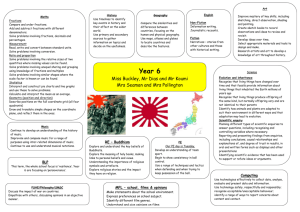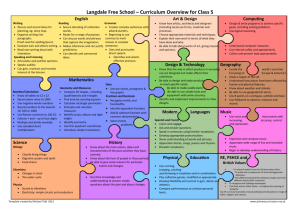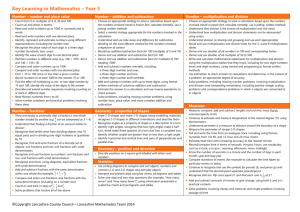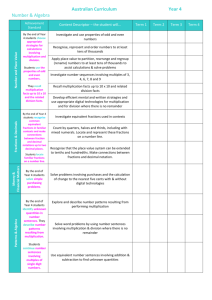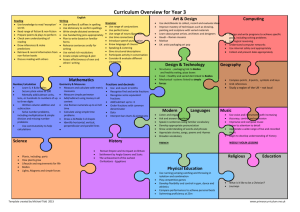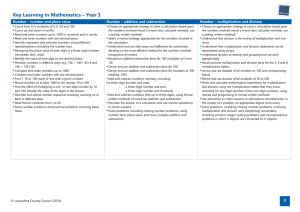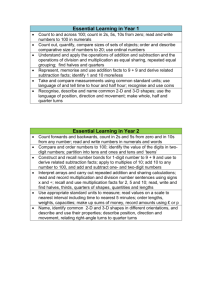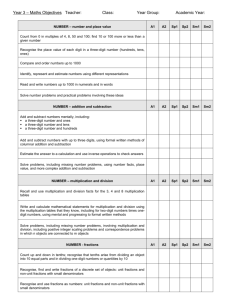Statutory Mathematics for Year 3
advertisement
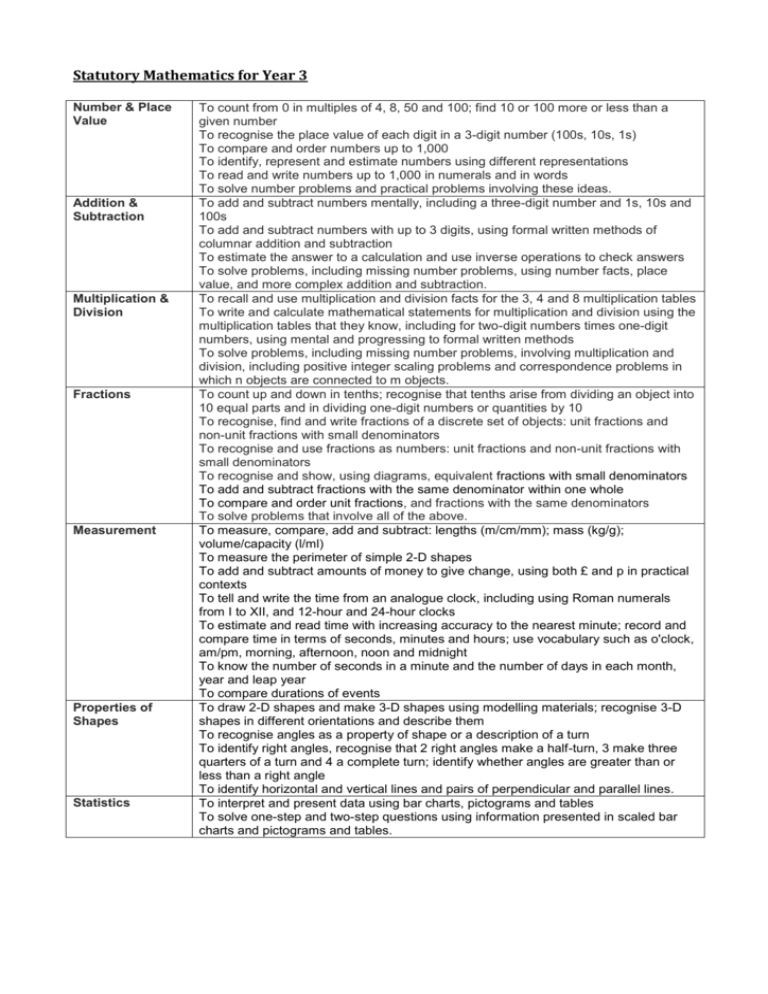
Statutory Mathematics for Year 3 Number & Place Value Addition & Subtraction Multiplication & Division Fractions Measurement Properties of Shapes Statistics To count from 0 in multiples of 4, 8, 50 and 100; find 10 or 100 more or less than a given number To recognise the place value of each digit in a 3-digit number (100s, 10s, 1s) To compare and order numbers up to 1,000 To identify, represent and estimate numbers using different representations To read and write numbers up to 1,000 in numerals and in words To solve number problems and practical problems involving these ideas. To add and subtract numbers mentally, including a three-digit number and 1s, 10s and 100s To add and subtract numbers with up to 3 digits, using formal written methods of columnar addition and subtraction To estimate the answer to a calculation and use inverse operations to check answers To solve problems, including missing number problems, using number facts, place value, and more complex addition and subtraction. To recall and use multiplication and division facts for the 3, 4 and 8 multiplication tables To write and calculate mathematical statements for multiplication and division using the multiplication tables that they know, including for two-digit numbers times one-digit numbers, using mental and progressing to formal written methods To solve problems, including missing number problems, involving multiplication and division, including positive integer scaling problems and correspondence problems in which n objects are connected to m objects. To count up and down in tenths; recognise that tenths arise from dividing an object into 10 equal parts and in dividing one-digit numbers or quantities by 10 To recognise, find and write fractions of a discrete set of objects: unit fractions and non-unit fractions with small denominators To recognise and use fractions as numbers: unit fractions and non-unit fractions with small denominators To recognise and show, using diagrams, equivalent fractions with small denominators To add and subtract fractions with the same denominator within one whole To compare and order unit fractions, and fractions with the same denominators To solve problems that involve all of the above. To measure, compare, add and subtract: lengths (m/cm/mm); mass (kg/g); volume/capacity (l/ml) To measure the perimeter of simple 2-D shapes To add and subtract amounts of money to give change, using both £ and p in practical contexts To tell and write the time from an analogue clock, including using Roman numerals from I to XII, and 12-hour and 24-hour clocks To estimate and read time with increasing accuracy to the nearest minute; record and compare time in terms of seconds, minutes and hours; use vocabulary such as o'clock, am/pm, morning, afternoon, noon and midnight To know the number of seconds in a minute and the number of days in each month, year and leap year To compare durations of events To draw 2-D shapes and make 3-D shapes using modelling materials; recognise 3-D shapes in different orientations and describe them To recognise angles as a property of shape or a description of a turn To identify right angles, recognise that 2 right angles make a half-turn, 3 make three quarters of a turn and 4 a complete turn; identify whether angles are greater than or less than a right angle To identify horizontal and vertical lines and pairs of perpendicular and parallel lines. To interpret and present data using bar charts, pictograms and tables To solve one-step and two-step questions using information presented in scaled bar charts and pictograms and tables.


